Not just Etna: The Giro d'Italia gets serious in Sicily
First three Italian stages present a range of challenges
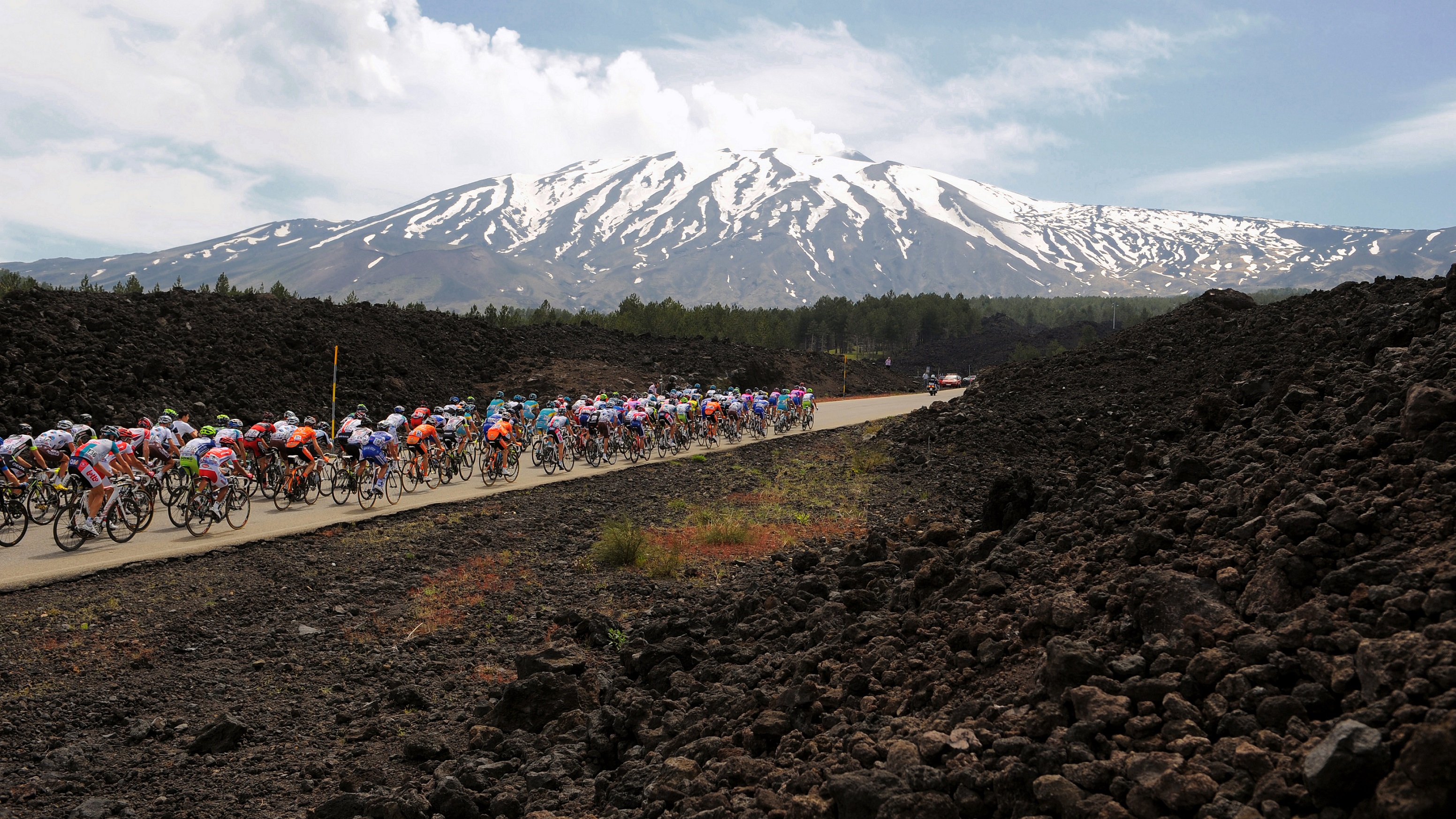
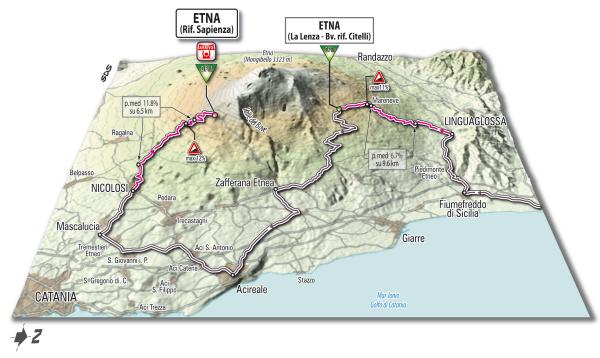
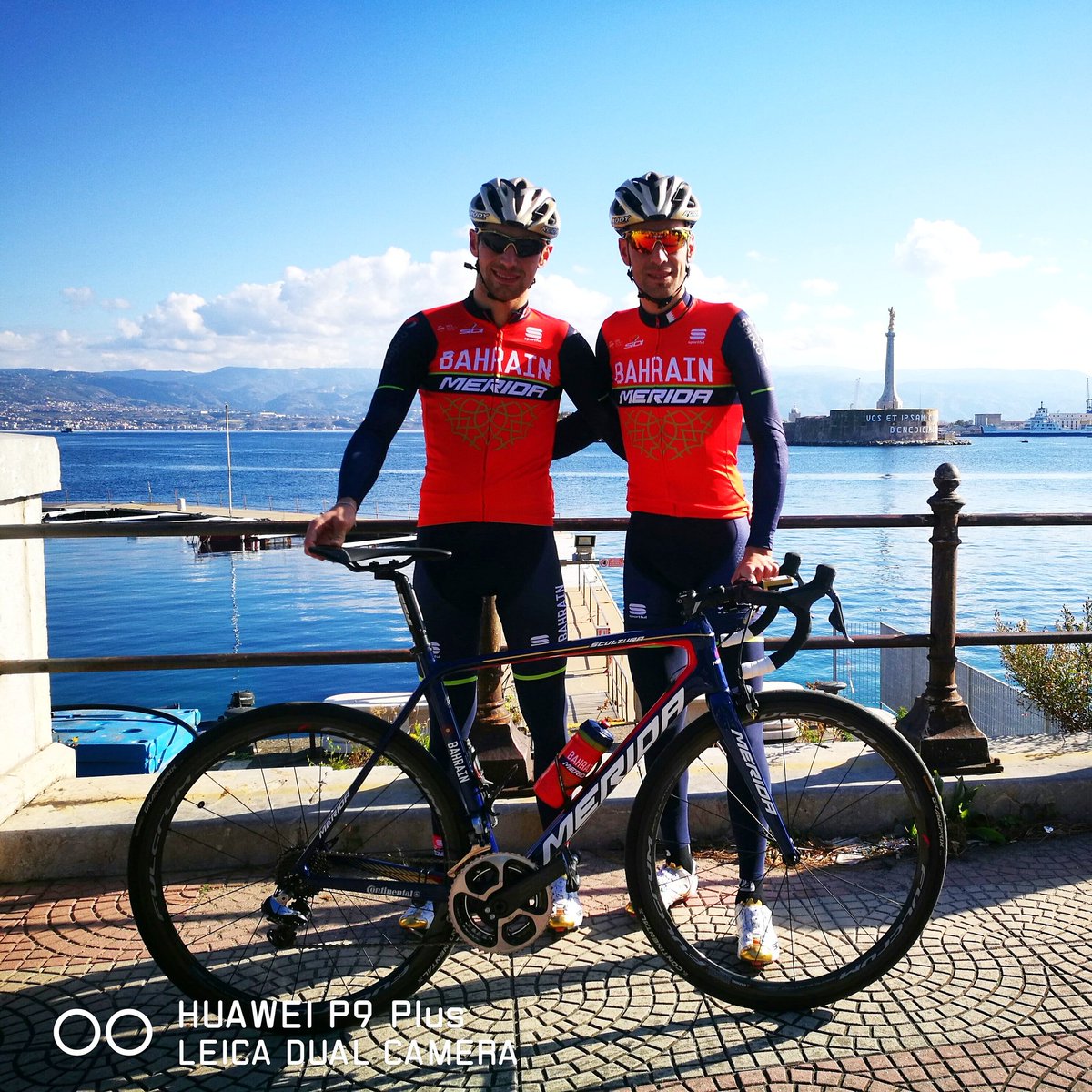
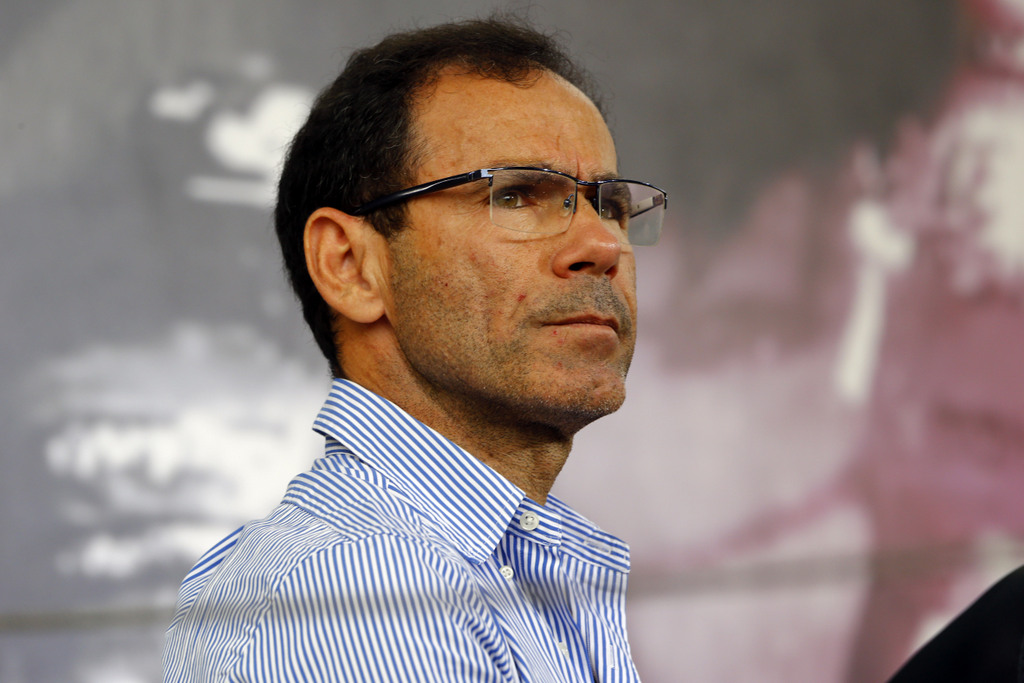
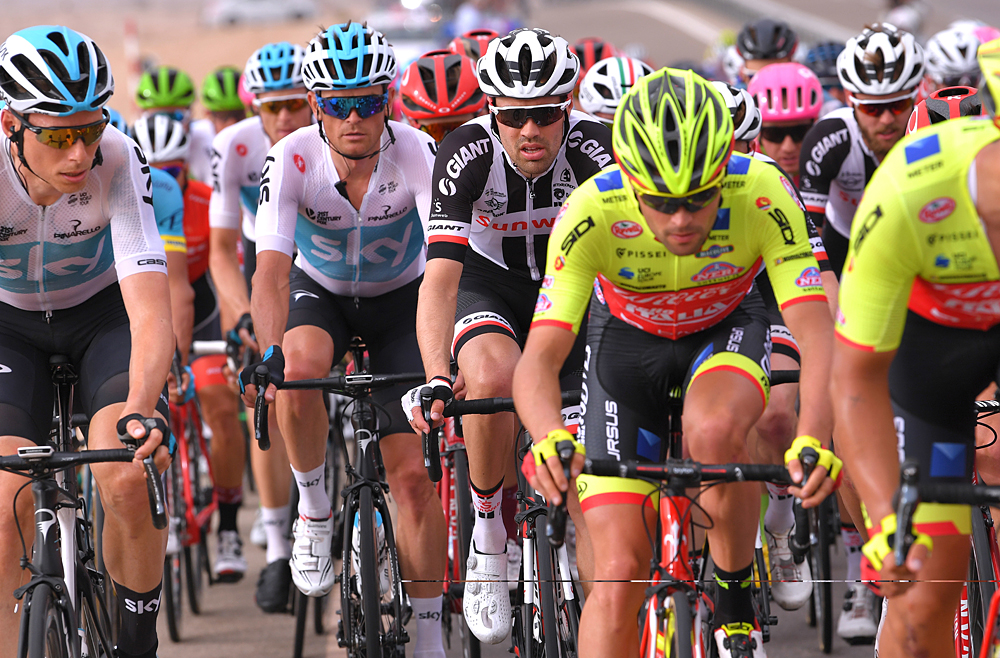
As the 174 remaining riders in the 2018 Giro d'Italia stepped out of the arrivals hall at Fontanarossa Airport on Monday lunchtime, their gazes were immediately arrested by the dark and brooding outcrop that defines the Catania skyline. In this corner of the world, Mount Etna tends to draw the eye and capture the imagination.
The ascent of Etna on Thursday will be the literal and figurative highpoint of the triptych of Sicilian stages on this year's Giro, but it would be remiss to paint the corsa rosa's extended stay on the island in such broad brushstrokes. While the summit finish on stage 6 is the next major set-piece for the podium contenders, there is plenty of devil in the detail of the two days that precede it.
"The first two stages in Sicily certainly aren't easy," Giro debutante and Sicilian native Antonio Nibali (Bahrain-Merida) tells Cyclingnews. "There are lots of small climbs throughout each day."
Stage 4: Catania-Caltagirone, 198km
After Monday's truncated rest day – a dawn wake-up call for a three-and-a-half flight from Israel rather ate into the allotted recovery time – the gruppo returns to the fray with the first Italian leg of this year's race on Tuesday. Stage 4 is hardly a gentle reintroduction to action; instead, riders face some 198 kilometres across heavy, rolling roads from Catania inland to Caltagirone.
Although the category 4 ascents of Pietre Calde (82.4km) and Vizzi (154km) are the only classified climbs on the route, there are several equivalent hauls 'hidden' throughout the stage, which crosses the hilltop towns of the Monti Iblei. There is scarcely a metre of flat all day long, and there is a rasping sting in the tail to boot, with short and punchy uphill finish in Caltagirone.
The finale includes a run through the narrow and twisting streets of the centro storico – the most important pinch point comes with 3km to go – before the road rises in the final kilometre at an average gradient of 8.5 per cent. The steepest section of 13 per cent comes with a shade under 500 metres remaining, and the road only barely flattens out thereafter.
Coming the day after the long transfer from Israel, it might well be a stage where the early break forges clear and stays away, particularly given the relative dearth of punchy finisseurs in this year's Giro field. That said, UAE Team Emirates might well be minded to bring the race back together for Diego Ulissi, while Elia Viviani has vowed that he will work for teammate Zdenek Stybar on the Sicilian stages.
Get The Leadout Newsletter
The latest race content, interviews, features, reviews and expert buying guides, direct to your inbox!
"It's an atypical stage in that it could force riders to expend a lot of energy even if not a lot happens," Italian national coach Davide Cassani told La Gazzetta dello Sport.
Not that the stage's effects on the GC battle will necessarily be the simple accumulation of fatigue. Simon Yates (Mitchelton-Scott) might well view the punchy final climb as a chance to snare seconds – and perhaps even a stage winner's time bonus – while Thibaut Pinot (Groupama-FDJ) was concerned enough about stages 4 and 5 to reconnoitre them when he travelled to Sicily to train on Etna in April.
Stage 5: Agrigento – Santa Ninfa, 153km
Agrigento and its storied Valley of Temples have a long association with big-time cycling, having hosted the World Championships in 1994, as well as the Grande Partenza of the 1999 Giro. Santa Ninfa, on the other hand, makes its debut as a stage town, as the Giro visits the province of Trapani for the first time to commemorate the 50th anniversary of the devastating Valle del Belice earthquake of 1968, which killed 231 people.
Stage 5 will be a day of two halves. The opening section along Sicily's southern coast takes in only the gentlest of undulations, but the terrain grows rather more rugged once the bunch turns inland at Sciacca after 60km. There are three category 4 climbs on the profile, beginning with Santa Margherita di Belice after 88km, which climbs for 2.8km at 4.3 per cent. The rather longer but steadier climb to Partanna (9.2km at 3.7 per cent) follows soon afterwards, while the summit of Poggioreale (4.7km at 5.4 per cent) comes a shade under 25km from the finish, and it provides a decent springboard for late attackers.
While race director Mauro Vegni maintains this stage is easier than the one preceding it, he was quick to stress that it's "unlikely to finish in a sprint." And even if it does, the uphill finale in Santa Ninfa is likely to prove too difficult for the pure sprinters, given that the road climbs sharply with 2km to go, hitting a gradient of 13 per cent with 1,500m remaining. After a short dip in the final kilometre, the road rises once more all the way to the line.
"These stages aren't easy; they're days for the breakaways or maybe for a very reduced peloton in a sprint at the end," warns Antonio Nibali, who doesn't hesitate when asked if he envisages a podium contender or two getting caught out on the first two stages in Sicily: "Yes, definitely."
Stage 6: Caltanissetta – Etna, 164km
Although the Giro's second visit to Sicily in as many years wasn't enough to persuade Vincenzo Nibali to line out, the corsa rosa was never going to visit the island without incorporating another local star. For the third time this decade and the fifth time in history, Mount Etna features as a summit finish, albeit via a new approach.
The ascent of Etna is the only classified climb on the trek from the Greek settlement of Caltanissetta, but, as on the previous two days, the heavy, rolling and twisting roads will exact a toll even before the peloton gets down to the business of climbing the mighty volcano. The first 120 kilometres, the road book points out, "features an endless series of bends," not to mention rugged terrain through the province of Enna.
After finishing at the Rifugio Sapienza in 2011 and 2017, the Giro this time approach Mount Etna from the southwest, via Ragalna, for a category 1 ascent to the astrophysical observatory some 1736 metres above sea level. From a statistical point of view, the 15km haul from Ragalna, which has an average gradient of 6.5 per cent and a maximum of 15 per cent, looks similar to previous ascents of Etna, but those in the know insist that it will prove more selective than the Nicolosi approach. There is an extended section of 14 per cent slopes with 5km remaining, and it is from this point onwards that one can expect attacks from the general classification contenders.
"It's a bit of special approach compared to the others, it's more irregular," explains Domenico Pozzovivo (Bahrain-Merida), a regular visitor to Etna. "It's more difficult to interpret than the other sides of the climb because it's more irregular. There should already be a selection before the final approach to the summit."
A year ago, a headwind on Etna meant that the Giro's ascent proved something of a damp squib, as Jan Polanc soloed to victory and the GC contenders largely held their fire. Pozzovivo, who lists meteorology among an eclectic range of interests, believes the wind should be at their backs this time around, especially once they swing onto the narrower roads with 5km remaining.
"I think it could force more of a selection than the other sides we've done because normally there's a tailwind rather than a headwind from that side," Pozzovivo says. "Last year, it was impossible to make a difference into that headwind, especially at the start of the Giro when we were all fresh. But I think it's possible to do something this time."
While 2017's excursion on Mount Etna was ultimately something of an anti-climax, the 2011 finish – initially, at least – proved rather more decisive than anyone anticipated. Alberto Contador's fearsome attack and stage victory on Etna seven years ago put him into the maglia rosa and handed him a commanding lead atop the overall standings. He would win the Giro in Milan, but was later stripped of the title by the Court of Arbitration for Sport when he was belatedly sanctioned for his 2010 clenbuterol positive.
Chris Froome (Sky), another rider competing amid considerable uncertainty given his ongoing salbutamol case, will doubtless view the climb of Etna as a chance to start recouping the ground he lost in his subdued opening time trial in Israel. Others, like current maglia rosa Rohan Dennis (BMC), will see Etna as the first robust examination of their longer-term ambitions.
By the time the Giro caravan crosses the Straits of Messina on Thursday evening, the complexion of the entire race could be very different. "If Etna is taken hard from the bottom, then the last five kilometres could make a big, big difference," Pozzovivo says.

Barry Ryan was Head of Features at Cyclingnews. He has covered professional cycling since 2010, reporting from the Tour de France, Giro d’Italia and events from Argentina to Japan. His writing has appeared in The Independent, Procycling and Cycling Plus. He is the author of The Ascent: Sean Kelly, Stephen Roche and the Rise of Irish Cycling’s Golden Generation, published by Gill Books.